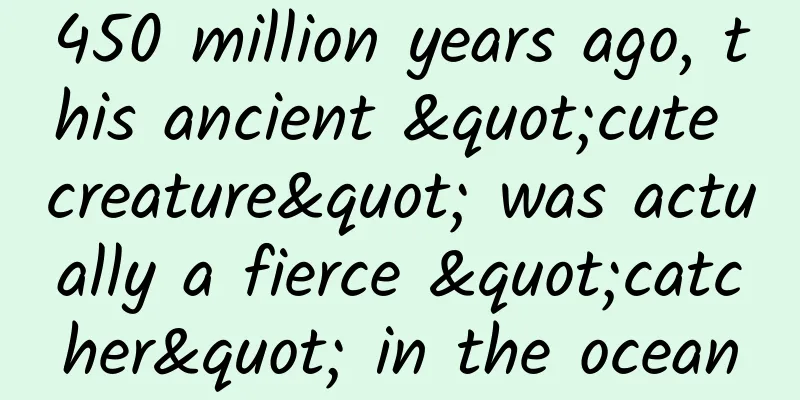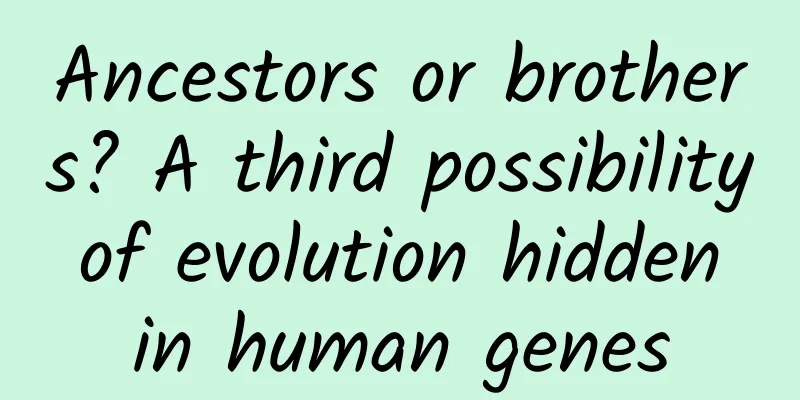450 million years ago, this ancient "cute creature" was actually a fierce "catcher" in the ocean

|
The reporter learned from the Nanjing Institute of Geology and Paleontology of the Chinese Academy of Sciences that researchers from the institute, in collaboration with British paleontologists, discovered an ancient arthropod about 450 million years ago in Anji County, Zhejiang Province, my country - the Anji Ancient Horseshoe Crab. The Anji Ancient Horseshoe Crab has a round head and looks very cute. However, it was actually a ferocious carnivore in the ocean at that time, and could be called the "cute overlord" in the ancient ocean. Reconstruction of the ancient horseshoe crab Anji (drawn by Yang Dinghua from Nanjing Institute of Geology and Paleontology, Chinese Academy of Sciences) Wang Han, a doctoral student at the Nanjing Institute of Geology and Paleontology, Chinese Academy of Sciences, said that the ancient horseshoe crab Anji is a species of the important ancient arthropod Eurycoma. Eurycoma live in fresh water or sea water, and it is more common to live in sea water. The Eurycoma discovered in the past is somewhat similar in shape to the current scorpion, so it is also commonly called a sea scorpion. The newly discovered Anji ancient horseshoe crab is more round and cute than the various horseshoe crabs discovered in the past. From the fossil, the complete body of the Anji ancient horseshoe crab is about 15 cm long. Its head is rounded, and its trunk is thick in front and thin in the back, divided into multiple sections. Its overall shape is similar to a round mallet. Only the thorn-like tail and the multiple pairs of pincers at the front remind the observer that they were once ferocious carnivores in the ancient ocean. Photo of the ancient horseshoe crab fossil in Anji (Photo provided by Nanjing Institute of Geology and Paleontology, Chinese Academy of Sciences) "The Anji ancient horseshoe crab lived about 450 million years ago and is the oldest eurypodid horseshoe crab discovered in my country so far. Around it, we also found fossils of sponges and other creatures living in the deep sea. These discoveries are of great reference value for understanding and restoring the deep-sea environment at that time, as well as studying the evolution of early arthropods." said Zhang Yuandong, a researcher at the Nanjing Institute of Geology and Paleontology, Chinese Academy of Sciences, who participated in this study. The relevant research results were recently published in the international paleontological journal "Journal of Paleontology". |
Recommend
China Pain Relief Week丨Pay attention to pain and say goodbye to pain together
Since the International Association for the Study...
It’s that simple! 5 simple principles to help you master the user experience design of your product
Many things in life are changing rapidly, and the...
Macheng SEO: The impact of update frequency on website SEO results
Macheng SEO can say with certainty that the high ...
How much do you know about product conversion: 4 analysis models for high conversion
What is conversion Conversion includes two things...
How can artificial intelligence make you happier the more you shop?
lead We have talked about autonomous driving, sma...
Is the increasingly entertaining QQ intended to defeat WeChat?
Recently, QQ and WeChat have been continuously upd...
How to enable external storage permission for Tik Tok?
This article mainly introduces the relevant infor...
[Beautiful article] This is how the first batch of users of Didi, Momo, and Meituan came from!
How did those awesome Internet companies promote ...
Whose birds are back? Check out this Beijing Spring Bird Watching Guide →
As spring arrives and flowers bloom, migratory bi...
Why is Apple Pay dominating the United States but marginalized in China?
Apple Pay has developed rapidly in the United Sta...
30 Taobao online store promotion methods that novices must read
For a novice opening a store, just waiting won’t ...
Xiaohongshu KOL screening, placement, and review tutorial
Since its inception, KOL has possessed strong tra...
Analysis of "9377 Games" advertising strategy and marketing effectiveness
Today, let’s take a look at a classic promotion c...


![Yang Chenglin's 5 Popular Style Illustration Tutorials 2020 [HD Quality with Brushes]](/upload/images/67cc0bf8b9d67.webp)






